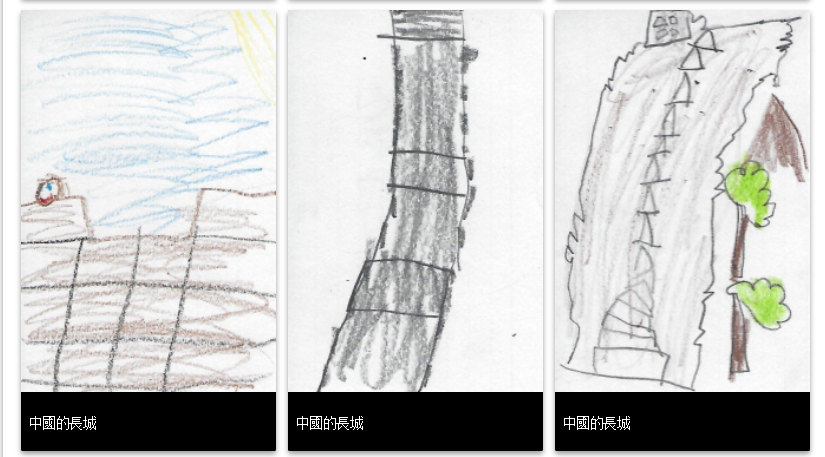This lesson is for : Grade 1:
Summary
It’s a bird, it’s a plane…it’s a Meglatond? What? Yes! Welcome to our Wonderful Wacky Zoo. A place where the most magnificent mammals on earth are gathered to stimulate your imagination.
Our class has been working collaboratively to investigate the basic needs of mammals as well as exploring their different types of habitats. These mammals have different physical characteristics and we sorted them with the headings of body, habitat, food, and life cycle. Students worked in groups to create a hybrid mammal of their choice (based on their research) and illustrated their creation through Pixie, Drawing Box, or paper and crayons. A class zoo map was constructed in Pixie using basic map symbols in a map legend. The virtual zoo was compiled into an interactive Thinglink. Take a chance and step into a world where your imagination has the opportunity to run wild with the mammals of our wacky zoo!
TIPC Ratings
Research & Information Fluency
Rating: Ideal – Explanation: Students first began the research phase by viewing different mammals in their habitats using webcams. In self-selected groups, students conducted research using Pebble Go. Interactive thinking was required for all students in order to complete their mammal research chart. They needed to locate the correct information for the headings: habitat, food, body, and life cycle. Students interacted with and displayed their information by creating their own hybrid mammal using a tool of their choice and then explaining their thinking through a digital voice over.
Communication & Collaboration
Rating: Ideal – Explanation: Communication and collaboration occurred throughout this entire lesson. Students worked in small groups to research, invent, produce and share their creations as they posted their zoo map Thinglink to the class blog for the world to get involved by commenting. We reached out to several people in the community as well as teachers and staff at our school to comment on our virtual zoo. Also, we reached out to the Metro Richmond Zoo in Richmond, Virginia and the Birmingham Zoo in Birmingham, Alabama to see if they would visit our virtual zoo and leave a comment on our blog. We were extremely fortunate to have the Birmingham Zoo respond to our request! They took a virtual tour of our zoo and left a comment for us on March 12, 2105. We received countless comments from our supportive parents. Many of our parents and students shared our zoo with their friends and family outside the state of Virginia. We’ve had comments on our blog from Maryland, Alabama, and Michigan (to name a few). A first grade class at Glen Allen Elementary took a tour of virtual zoo and commented. A fourth grade class from Harvie Elementary also took some time to view our zoo. Furthermore, students reflected on their roles as communicators and collaborators while setting goals for future growth as they completed the Self Reflection sheet.
Critical Thinking & Problem Solving
Rating: Ideal – Explanation: Critical thinking and problem solving were exercised throughout this lesson. Students had to come up with a hybrid mammal that would be compatible and explain the type of habitat it would need to live in in order to survive as well as the type of food it would eat. Critical thinking and problem solving was also applied when making our zoo map. The students had to think about where everything on our map should go and give reasoning for why it should go there. The students had to problem solve when we realized we originally didn’t leave room for the map legend. Things had to be moved around on the map and the students needed to ask themselves, “Where can I move this?” and “Will it make sense there?” Additionally, students need to think critically when there were not stickers on Pixie to represent all the symbols on our map legend. We needed a symbol for a water fountain and for public bathrooms. Several students asked if we could use a water bottle to represent a water fountain. I asked the students, what pictures do you typically see on public restrooms? They mentioned a picture of a man and woman, so they looked for men and women stickers to represent our bathroom. The self-reflection form helped students reflect on their roles as critical thinkers and problem solvers.
Creativity & Innovation
Rating: Ideal – Explanation: Each of the students were able to demonstrate their creativity and innovation with this project because they were given a choice when creating their final illustration. They were given three options of how they would like to present their new mammal. Students were able to do some self-reflecting to think which choice would work best in demonstrating their creativity. The students worked hard to illustrate mammals using their imagination. No matter how the individual project was created, all students had to have a vision of what they wanted their mammal to look like. Each group used their imaginative and artistic skills to create a mammal based on their research. Furthermore, many of the students thought creatively when choosing their sticker in Pixie to represent their animal habitat in our class zoo map. Some chose nontraditional buildings. One student chose what was labeled as an “outhouse,” but he felt that the way the structure was designed best fit his idea of his mammal’s habitat. The students were also creative when picking the stickers in Pixie to represent our symbols on the map legend. There wasn’t a sticker for a water fountain or a restaurant, so some students came up with the idea of using a water bottle to represent a water fountain or the juice box and hot dog to represent the restaurant.






